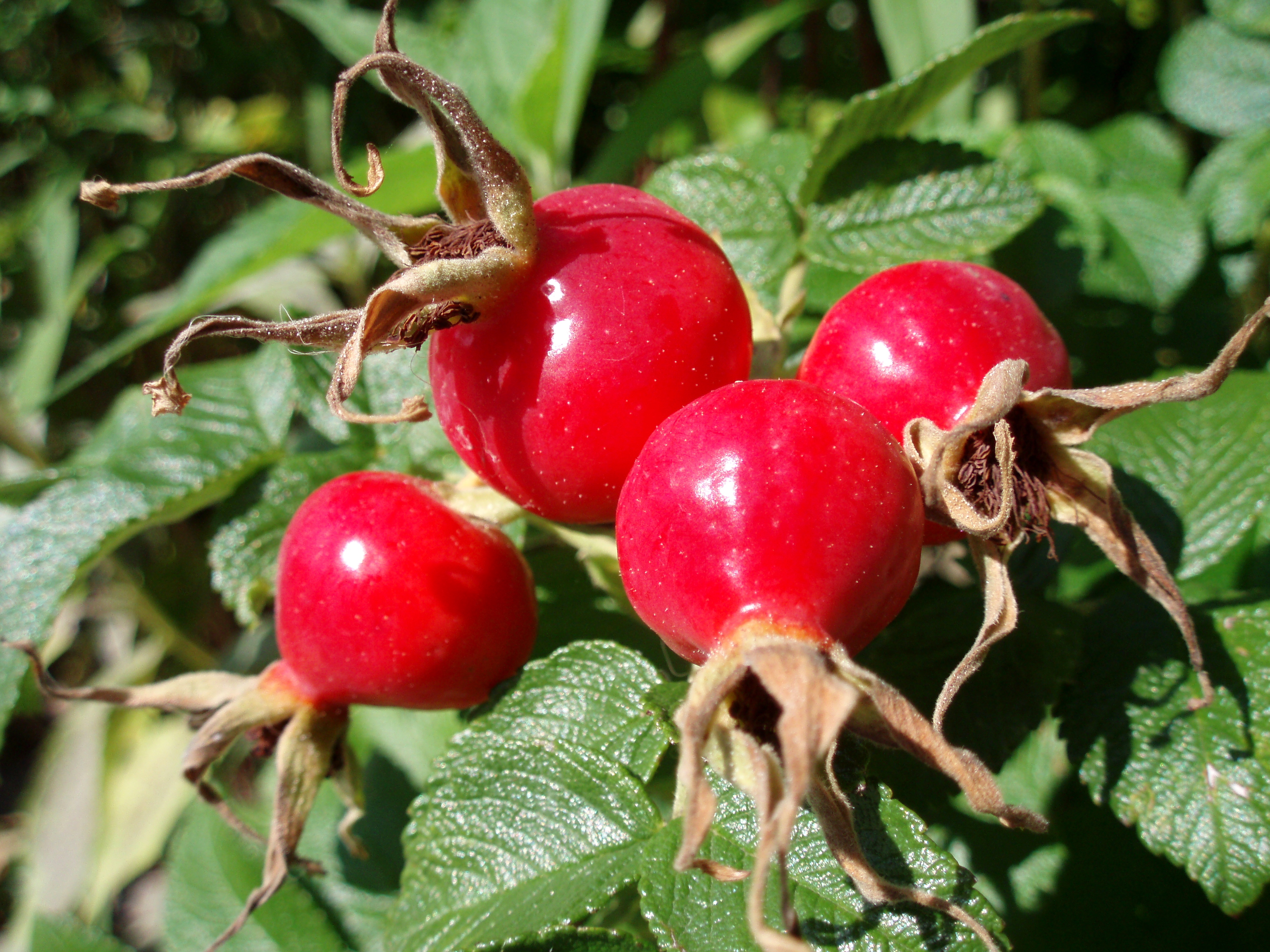 |
| Rose Thorns |
All the spent rose leaves should have been cleared already from under the plants when they first drop (late Fall), this should eliminate any potential mildew or black spots. I would also suggest clearing any accumulation of mulch or leaves from the base of the roses to avoid burying the plants.
 |
| Black Spot |
Also, I hope you've been able to take advantage of the ripened rose hips to make all your Vitamin C rich teas and tinctures over the fall and winter months. If not, harvest those before disposing of your rose clippings. Here is a link to some harvesting and recipe ideas.
 |
| Rose hips |
 |
| Secateurs |
 |
| Rose Gloves |
 |
| Proper Pruning
Prune to open up the plants for light and air circulation and to avoid overlapping branches. Attempt an elk antler or vase form. When removing a dead, diseased or damaged branch, remove it from the base entirely. Also, remove any weak or suckering branches. Aim to keep the strongest branches that are growing away from the center of the plant. Roses have alternate leaf arrangement. So when pruning the roses align your secateurs to the leaf buds at a 45 degree angle and clip about 1/4 " above the bud that is facing toward the outside of the plant. This is really important because if you leave too much of a stub from the leaf bud it will require the plants energy to replenish the plant instead of using that energy to force a leaf. Alternately, if you cut into the leaf bud, the plant will die back to the next leaf bud and will potentially leave it open to infection. In other words, prune it effectively in the beginning and avoid injuring your prized rose bush. One of the most common varieties of roses is the hybrid tea. When pruning a hybrid tea rose you want to cut it down by about a half or 18-24".
|
 |
| Hybrid Tea Rose |
Now, rake all of the debris from under the roses that may have fallen off during this process and dispose of all your clippings. Put it in the green waste bin or garbage. These are not compost worthy scraps, unless you have a high heat composter that can kill off any potential fungal diseases. Clean and dry your tools. Tada...you're done! Now you can wait it out for the buds to swell and fast forward a few months and everyone will ask why you have such beautiful roses.
Of course, this is Rose Pruning 101. It can get a bit more complicated when you start to get specific on different varieties of roses. And, there are HUNDREDS of rose cultivars. Here is a quick link from the internet of the major rose varieties and slight pruning variations.
BLOOMS ONCE, ON NEW GROWTH
Modern Ever-Blooming Roses & Floribunda: These bloom best on the current season's growth. Prune hard (½ to 2/3 the plant's height) in the spring and remove old woody stems. Leave 3-5 healthy canes evenly spaced around the plant. Cut them at various lengths from 18 - 24 inches, to encourage continuous blooming.
Hybrid Teas & Grandiflora: These also bloom on new wood and should be pruned in early spring. Remove dead and weak wood. Create an open vase shape with the remaining canes by removing the center stems and any branches crossing inwards. Then reduce the length of the remaining stems by about ½ or down to 18 - 24 inches. You can allow the older, stronger stems to be a bit longer than the new growth.
BLOOMS ONCE, ON OLD WOOD
Ramblers: Prune to remove winter damage and dead wood or to shape and keep size in check. Ramblers bloom only once and can be pruned right after flowering, all the way back to 2-3 inches if you wish.
REPEAT BLOOMERS
Modern Shrub Roses: This group is repeat bloomers, blooming on mature, but not old, woody stems. Leave them unpruned to increase vigor for the first 2 years and then use the "one-third" method. Each year remove one-third of the oldest canes (in addition to any dead, diseased or dying canes).
Climbers: Climbers may repeat bloom. Prune early to remove winter damage and dead wood. Prune after flowering to shape and keep their size in check.
Bourbons and Portlands: These will repeat bloom, blooming on both new and old wood. Prune to remove dead wood before flowering. A harder pruning and shaping can be done after the first flowering.
MINIMAL PRUNING NEEDED
Alba, Centifolia, Damasks, Gallica, and Mosses: This group blooms only once, producing flowers on old wood and don't require much pruning at all. Prune only to remove dead or thin wood and to shape the plants and prune after flowering.














